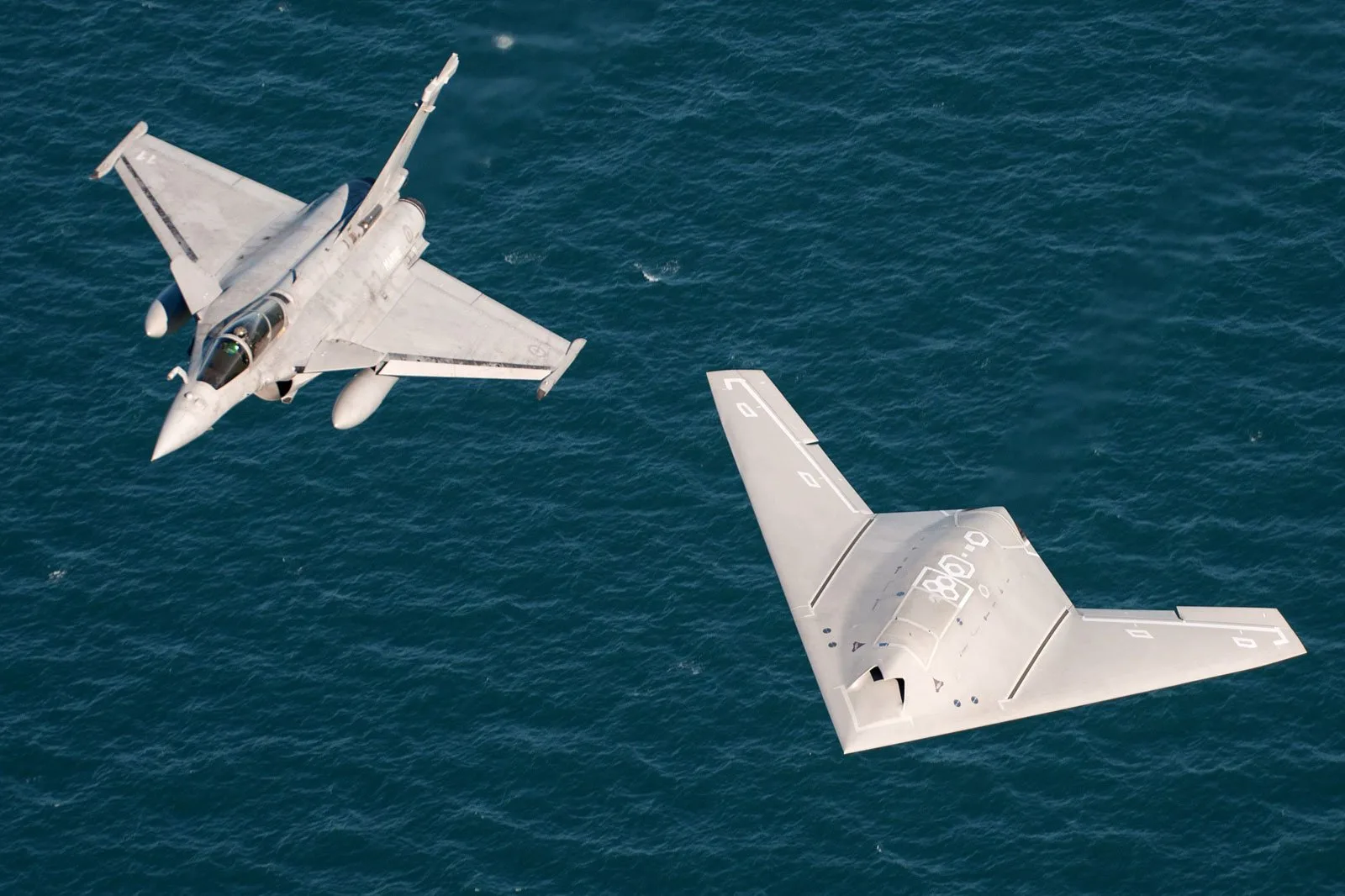France makes the leap to the Rafale F5, featuring Artificial Intelligence and a new «Loyal Wingman» stealth drone
French Armed Forces Minister Sébastien Lecornu has announced the launch of the first orders to develop the new Rafale F5 standard during his visit to Saint-Dizier Air Base on October 8th.
The Rafale F5 standard will be capable of carrying and launching the future ASN4G nuclear missile, which is expected to enter service in the next decade. Led by the Directorate General of Armament (DGA), the Rafale program is based on continuous development, allowing aircraft to adapt to evolving needs through successive standards. Expected within the next decade, the Rafale F5 aims to enhance the operational capabilities of the French Air Force for both nuclear deterrence and conventional missions, in response to rapidly evolving threats.

The F5 standard represents a significant evolution of the Rafale, building upon the connectivity and data processing capabilities of the F4 standard. With a new radar, electronic warfare system, enhanced optronic sensors, and the integration of the ASN4G missile, the F5 offers a substantial enhancement to the fighter’s capabilities. Additionally, the incorporation of saturation weapons and compatibility with stealth drones positions the F5 as a cutting-edge combat platform.
Stealth combat drone to complement the Rafale F5
In order to augment the capabilities of the Rafale F5, a stealth combat drone is being developed under the leadership of Dassault Aviation, Thales, and Safran. Leveraging stealth technology, this new system will be equipped to undertake high-risk missions such as penetrating hostile air defenses, engaging in aerial combat, and conducting strikes against ground targets in extremely challenging environments. Furthermore, it is intended to serve as the foundation for defeating modern medium and long-range air defense systems, as the French government has opted not to develop a SEAD/DEAD variant of the Rafale.

Leveraging the experience of the nEUROn demonstrator, the new drone will offer a high degree of stealth, advanced sensors and a wide range of weaponry. Thanks to its in-flight refueling capability and robust connectivity, this equipment will be able to operate in a coordinated and prolonged manner, ensuring air superiority in any scenario.
The integration of artificial intelligence (AI), advanced mission computers, and fiber-optic cabling into the Rafale F5 will enable unprecedented collaboration with the stealth combat drone. This synergy will improve decision-making, enabling faster and more efficient operations, and lay the groundwork for the development of the future Future Combat Air System (FCAS). To facilitate the operational exploitation of this pairing, the new drone will share logistical elements with the future F5, suggesting the use of common hardware and software components with the Rafale.

/https://aviacionlinecdn.eleco.com.ar/media/2023/11/nEUROn-Rafale.webp)
Para comentar, debés estar registradoPor favor, iniciá sesión